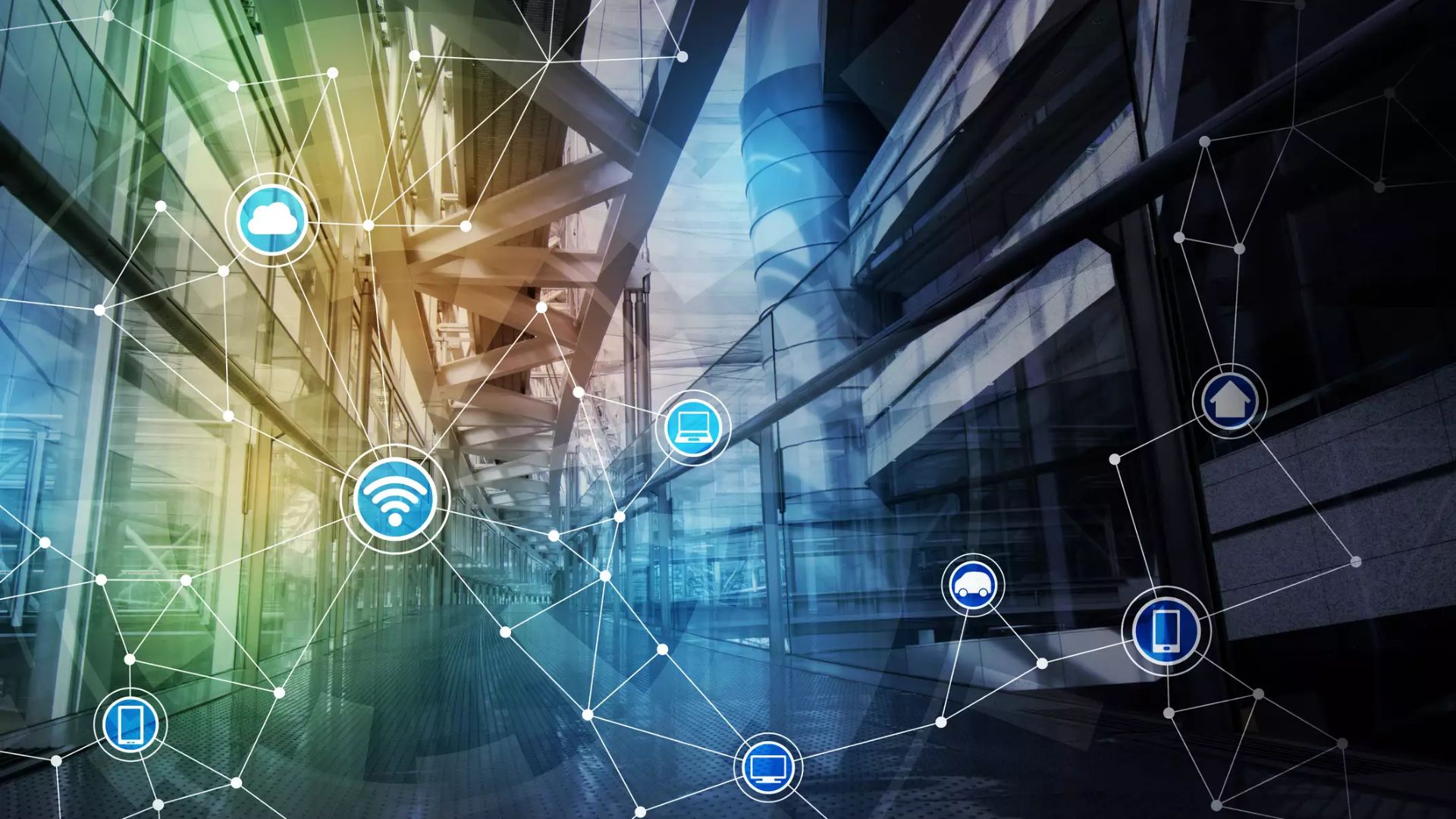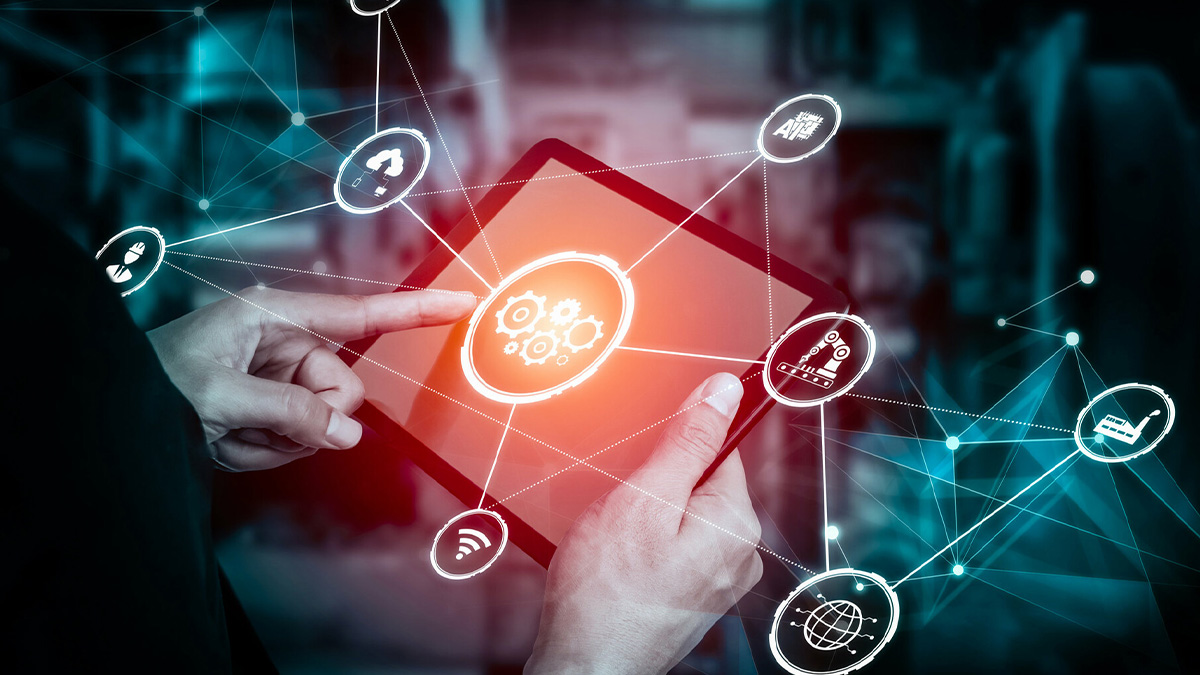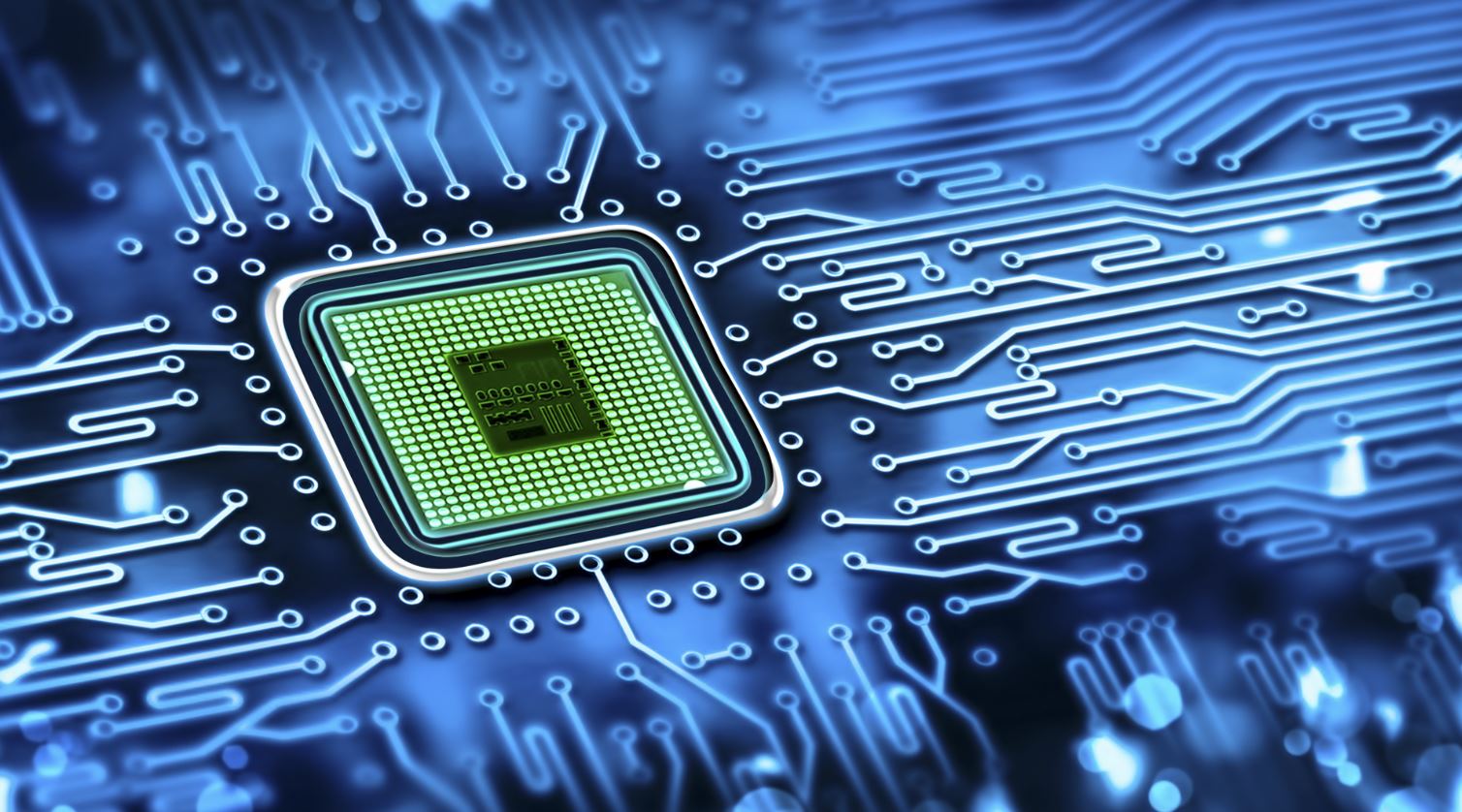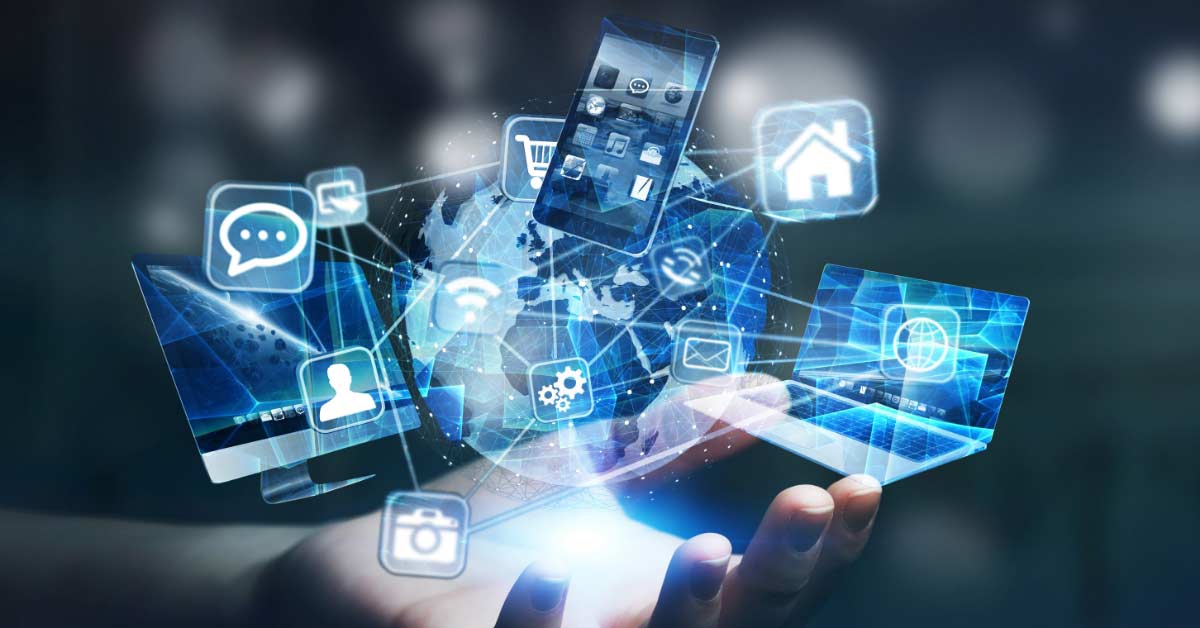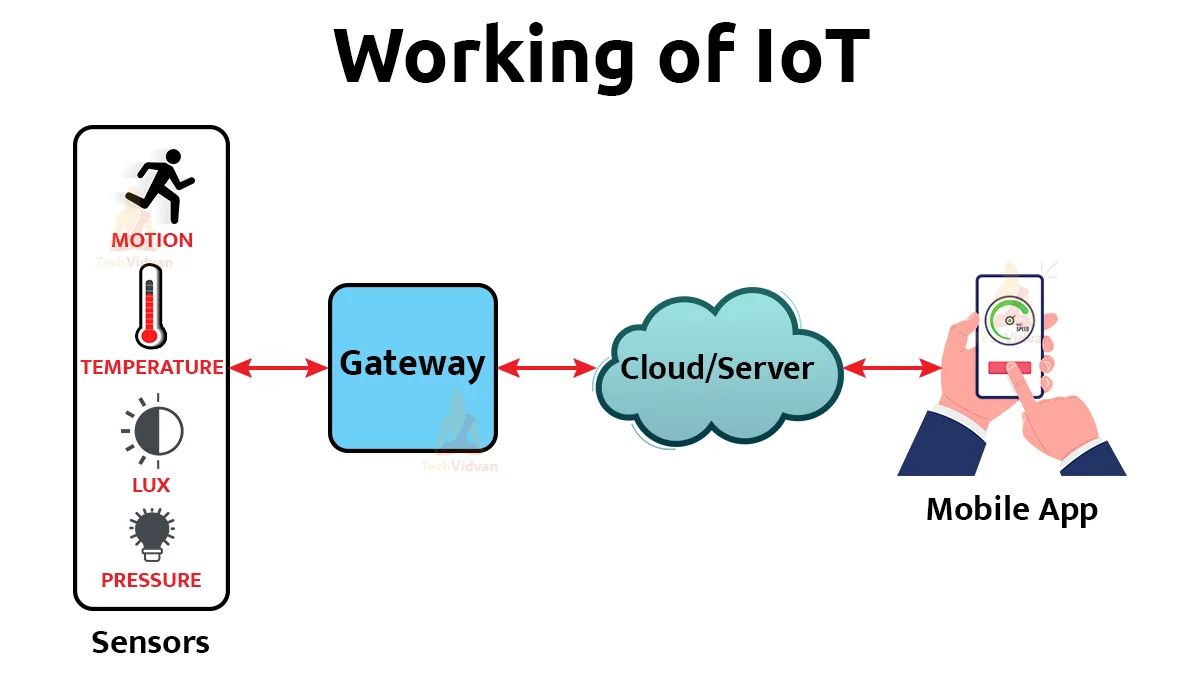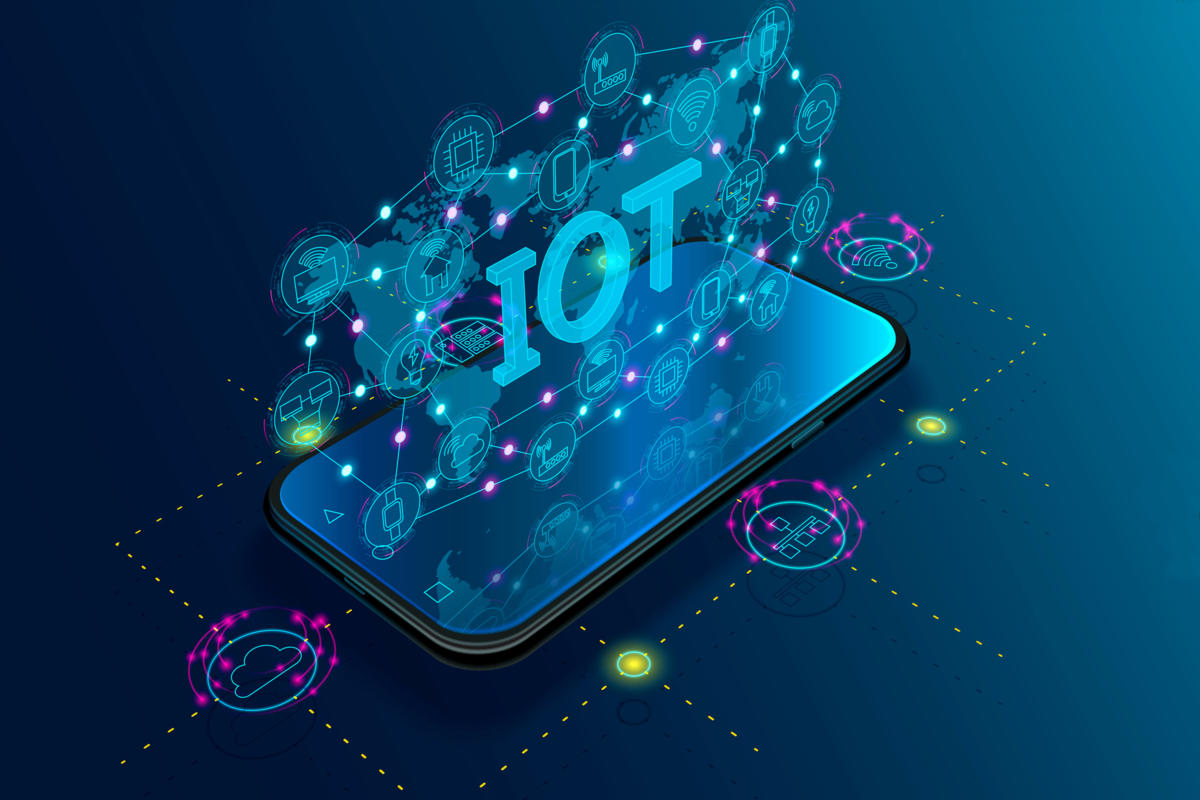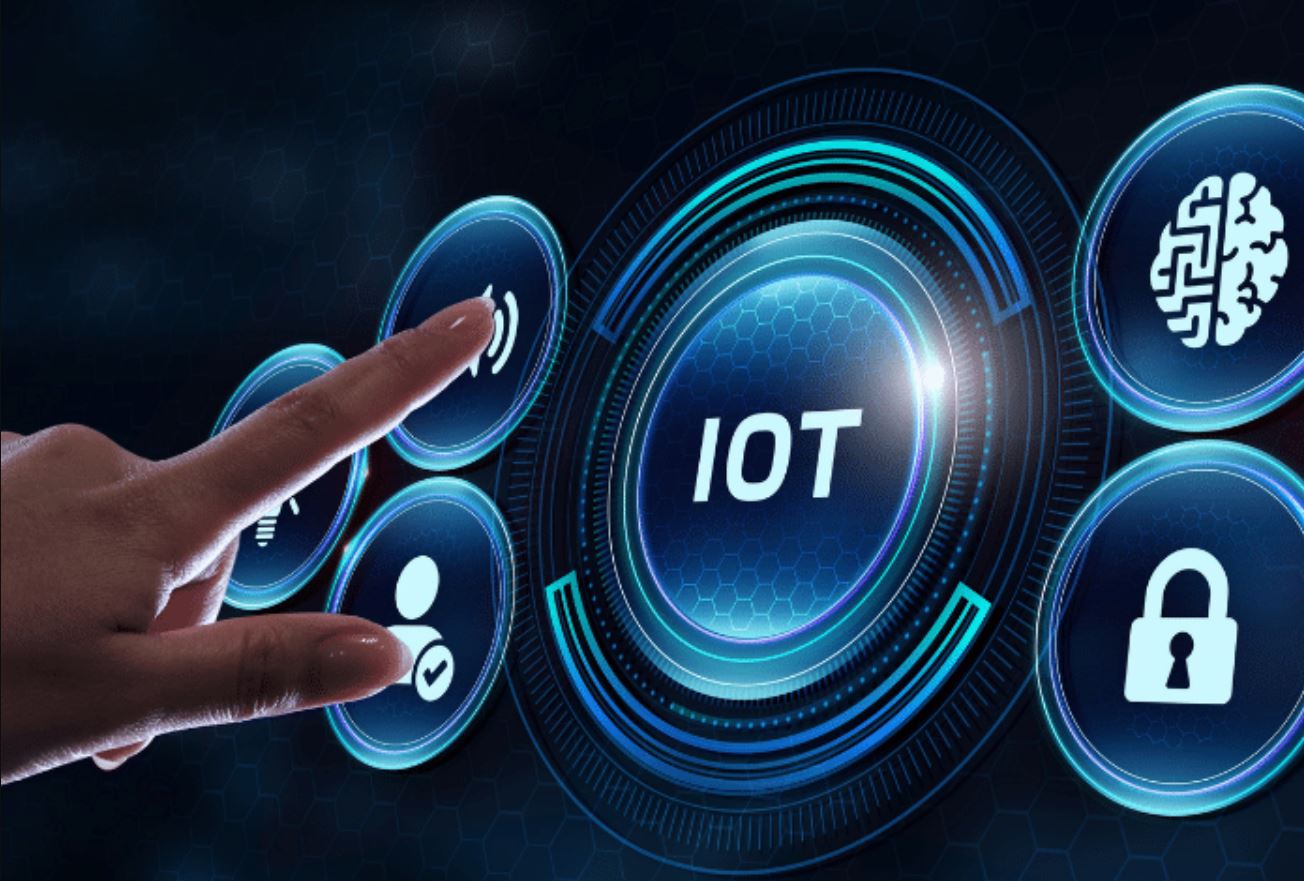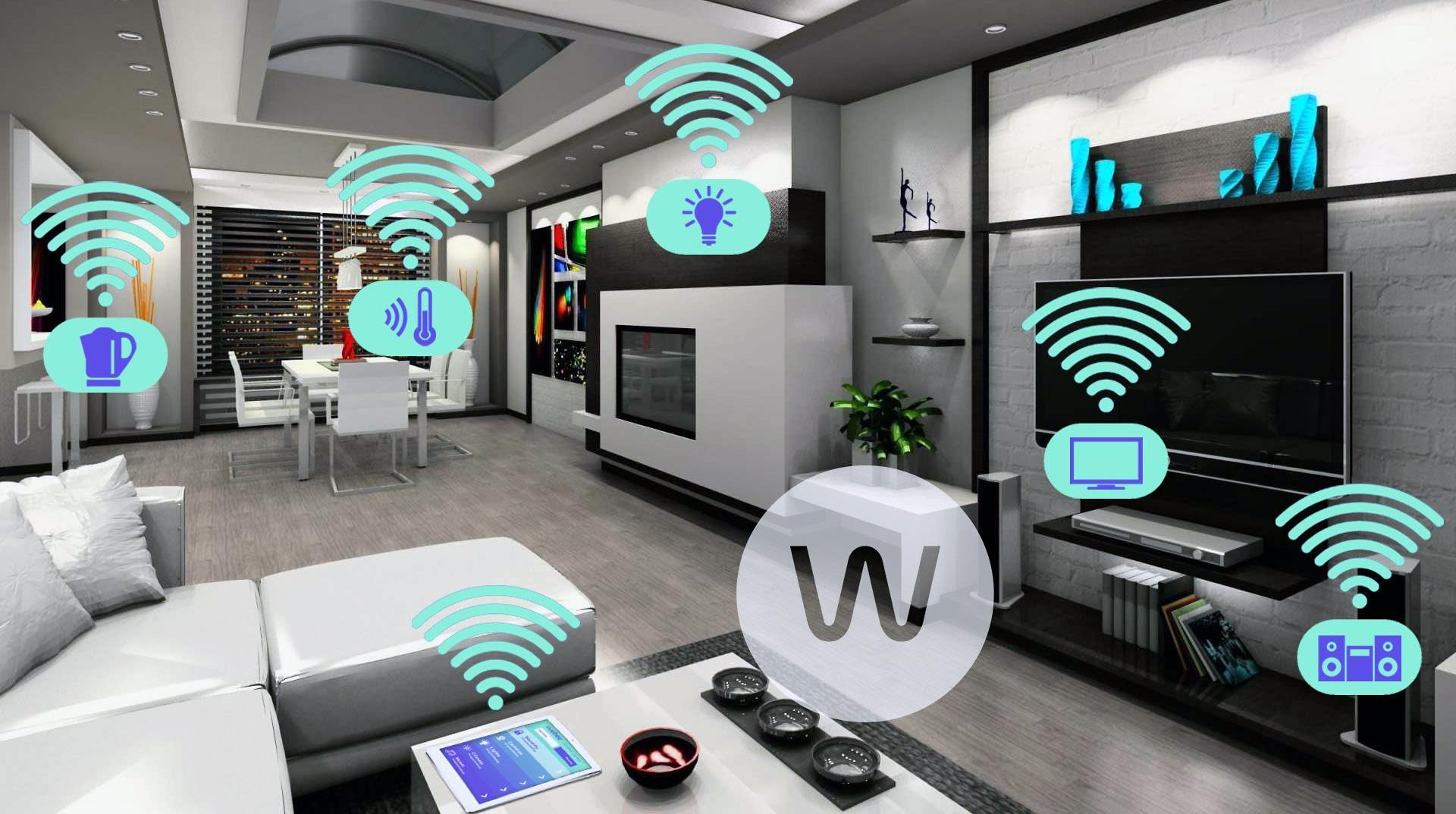Introduction
In today’s ever-evolving digital landscape, the Internet of Things (IoT) has emerged as a transformative force. Connected devices and sensors are rapidly becoming an integral part of our daily lives, offering unprecedented levels of convenience, efficiency, and connectivity. From smart homes to healthcare, transportation to agriculture, the potential applications of IoT are wide-ranging and limitless.
The IoT revolution has already begun, with billions of devices connected to the internet, generating an unimaginable amount of data. This data has the power to revolutionize industries, drive innovation, and improve our quality of life. However, what does the future hold for IoT? What are the exciting possibilities that lie ahead?
In this article, we will explore how IoT will be used in the future and the potential impact it will have on various industries. We will delve into the advancements and emerging trends that will shape the way we live, work, and interact with technology.
Smart Homes and Connected Appliances
One of the most prominent areas where IoT is already making its mark is in smart homes and connected appliances. With the rise of smart devices such as voice assistants, smart thermostats, and connected security systems, our homes are becoming smarter and more interconnected than ever before.
Imagine arriving home after a long day at work, and as you approach your front door, it automatically unlocks using facial recognition technology. Inside, you are greeted by the perfect lighting and temperature settings, as your smart home has learned your preferences over time. With IoT-enabled appliances, you can control and monitor your home’s energy consumption, remotely manage your appliances, and receive alerts in case of any potential issues.
The future of smart homes goes beyond convenience and energy efficiency. IoT will play a crucial role in enhancing home security and safety. Integrated surveillance systems and smart locks will give homeowners peace of mind by allowing them to monitor and control access to their homes from anywhere in the world.
Moreover, IoT devices will work together seamlessly, creating a cohesive and intuitive home automation system. For example, your smart refrigerator can detect low inventory and automatically add items to your shopping list, which can be conveniently accessed through your smartphone while you are out grocery shopping.
As the IoT ecosystem expands, we can expect to see more innovative features and integration with emerging technologies. The future of smart homes will involve more personalized experiences, with homes adapting to our preferences and needs in real-time. Voice recognition, artificial intelligence, and machine learning will play a significant role in creating intelligent homes that understand and cater to our unique lifestyle.
Healthcare Industry and Remote Patient Monitoring
The healthcare industry is poised for a major transformation with the integration of IoT technology. Remote patient monitoring, in particular, holds immense potential to revolutionize healthcare delivery and improve patient outcomes.
IoT devices can collect real-time health data, allowing healthcare professionals to remotely monitor patients’ vital signs, medication adherence, and overall health status. This continuous monitoring enables early detection of health issues, proactive interventions, and personalized treatment plans.
Gone are the days when patients needed to visit the doctor’s office or hospital for routine check-ups. With remote patient monitoring, patients can stay in the comfort of their homes while their healthcare team keeps a watchful eye on their health. This not only reduces the burden on healthcare facilities but also empowers patients to take a more active role in their own care, leading to better health outcomes.
For chronic disease management, IoT-enabled wearable devices can track and transmit data on blood glucose levels, heart rate, blood pressure, and other vital metrics. This information can be analyzed in real-time, allowing healthcare professionals to identify patterns, make data-driven decisions, and intervene when necessary.
Furthermore, IoT devices can also help with medication management. Smart pill dispensers can remind patients to take their medication, dispense the correct dosage, and send alerts to caregivers or healthcare providers if doses are missed. This not only improves medication adherence but also reduces the risk of adverse drug events.
In addition to remote patient monitoring, IoT technology can aid in efficient healthcare resource management. For instance, connected devices can track the availability and usage of medical equipment, enabling proactive maintenance and preventing disruptions in healthcare services.
The future of healthcare will see the integration of IoT with other emerging technologies, such as artificial intelligence and data analytics. This will enable the development of predictive models, early warning systems, and personalized treatment plans based on patient-specific data and trends.
Overall, IoT in the healthcare industry holds tremendous potential to enhance patient care, improve health outcomes, and optimize healthcare resource utilization.
Transportation and Autonomous Vehicles
The transportation industry is on the cusp of a monumental shift thanks to advancements in IoT technology, particularly in the realm of autonomous vehicles. Self-driving cars, trucks, and drones have the potential to transform the way we travel and transport goods.
Autonomous vehicles equipped with IoT sensors, cameras, and radar systems can gather real-time data about road and traffic conditions, enabling them to navigate safely and efficiently. These vehicles can communicate with each other and with smart infrastructure, reducing the risk of accidents and congestion.
One of the key benefits of autonomous vehicles powered by IoT technology is improved road safety. By eliminating human error, which accounts for a significant portion of accidents, self-driving vehicles have the potential to save thousands of lives each year. IoT sensors can detect obstacles, pedestrians, and other vehicles, allowing autonomous vehicles to make split-second decisions and avoid collisions.
Furthermore, IoT-enabled transportation systems can optimize traffic flow, reduce congestion, and minimize travel times. With real-time data on road conditions and traffic patterns, vehicles can dynamically adjust their routes to avoid congestion hotspots and take the most efficient paths. This not only saves time for passengers but also reduces fuel consumption and greenhouse gas emissions.
Beyond personal transportation, IoT in transportation encompasses a wide range of applications. For instance, logistics and supply chain management can benefit immensely from IoT-enabled tracking and monitoring systems. Sensors placed on vehicles and packages can provide real-time visibility into the location, condition, and estimated delivery time of goods.
Moreover, connected vehicles can communicate with smart infrastructure to prioritize traffic signals, optimize parking spaces, and provide real-time updates on public transportation schedules. This integration of IoT in transportation paves the way for smarter, more efficient, and environmentally-friendly urban mobility.
As the technology evolves, fully autonomous vehicles are expected to become more prevalent, reshaping the transportation landscape. Ride-sharing services may transition to fleets of autonomous vehicles, reducing the need for personal vehicle ownership. This shift has the potential to reduce traffic congestion, parking shortages, and pollution in urban areas.
The future of transportation is undoubtedly linked with IoT, and as the technology continues to advance, we can expect safer, more efficient, and sustainable transportation systems that revolutionize the way we move from point A to point B.
Industrial Automation and Smart Manufacturing
The industrial sector is experiencing a profound transformation with the integration of IoT technology, ushering in the era of industrial automation and smart manufacturing. IoT-enabled devices, sensors, and analytics are revolutionizing traditional manufacturing processes, making them more efficient, cost-effective, and flexible.
Industrial automation involves the use of IoT devices to monitor and control manufacturing operations, optimizing productivity and minimizing downtime. Connected sensors can collect real-time data on machine performance, temperature, energy consumption, and other critical parameters. This data is analyzed to detect anomalies, predict equipment failures, and enable proactive maintenance, reducing costly production interruptions.
Smart manufacturing takes industrial automation a step further by incorporating advanced technologies such as artificial intelligence and machine learning. IoT devices gather vast amounts of data from across the manufacturing ecosystem, enabling real-time insights and predictive analytics. This data-driven approach helps manufacturers make informed decisions, improve process efficiency, and drive continuous improvement.
IoT-enabled smart factories also foster collaboration between humans and machines. Connected devices and wearables can provide real-time feedback to operators, ensuring that production processes are carried out accurately and efficiently. This human-machine collaboration enhances overall productivity and reduces the margin of error.
One of the significant advantages of smart manufacturing is the ability to achieve a high level of customization and personalization. IoT technologies enable seamless communication between different stages of the production process, allowing manufacturers to quickly adapt to changing customer demands. This flexibility not only reduces lead times but also enables manufacturers to offer more tailored products and services.
IoT in industrial automation also plays a vital role in supply chain management. Connected devices can monitor inventory levels, track shipments, and optimize supply chain logistics. This real-time visibility enables manufacturers to improve inventory management, reduce waste, and ensure timely delivery of products.
As the IoT ecosystem expands, manufacturers are increasingly adopting the concept of the Industrial Internet of Things (IIoT). This involves connecting not only machines and devices but also integrating data from suppliers, customers, and other stakeholders. The integration of IIoT allows for end-to-end visibility and collaboration, optimizing the entire value chain.
The future of industrial automation and smart manufacturing holds immense potential for increased efficiency, sustainability, and competitiveness. As IoT technology advances and becomes more ubiquitous, we can expect manufacturers to embrace IoT-driven strategies and reshape traditional manufacturing processes.
Agriculture and Precision Farming
The agriculture industry is undergoing a transformative revolution with the integration of IoT technology, paving the way for precision farming. IoT-enabled devices, sensors, and data analytics are empowering farmers to make data-driven decisions, optimize resource utilization, and increase crop yields.
Precision farming involves the use of IoT sensors to monitor various environmental factors, such as soil moisture, temperature, and nutrient levels. This real-time data provides valuable insights into crop health, allowing farmers to apply targeted interventions and optimize the use of resources such as water, fertilizers, and pesticides.
With IoT-enabled precision agriculture, farmers can deploy automated irrigation systems that adjust water usage based on soil moisture levels. This technology reduces water waste and ensures that crops receive the optimal amount of hydration, even in varying weather conditions.
Moreover, IoT sensors can detect pest and disease outbreaks at an early stage, enabling farmers to take proactive measures to protect their crops. By closely monitoring environmental conditions and plant health, farmers can apply targeted treatments, reducing the need for excessive chemical use and promoting sustainable farming practices.
IoT technology also aids in optimizing the timing of planting and harvesting. By analyzing historical data, weather forecasts, and soil conditions, farmers can determine the ideal time to sow seeds and harvest crops for maximum yield. This precision timing not only enhances productivity but also minimizes waste and improves overall profitability.
Furthermore, IoT devices can be employed in livestock farming to monitor animal health and well-being. Connected wearables can track vital signs, activity levels, and feeding patterns, providing valuable insights into livestock health and allowing early detection of any potential issues. This enables farmers to provide timely interventions, ensuring the overall health and welfare of their animals.
IoT technology also facilitates the integration of agricultural data from multiple sources, such as satellite imagery and weather forecasts. This integrated data can be analyzed to provide farmers with actionable insights and recommendations, enabling them to make informed decisions about crop management and optimize yield.
The future of agriculture lies in the continued integration of IoT technology with artificial intelligence and machine learning. This convergence will enable the development of advanced predictive models, autonomous farming equipment, and further optimization of agricultural processes.
Overall, IoT in agriculture holds immense potential for sustainable farming practices, increased productivity, and resource efficiency. By leveraging the power of IoT, farmers can revolutionize the way food is grown, making agriculture more sustainable and resilient in the face of global challenges.
Retail and Inventory Management
The retail industry is undergoing a significant transformation with the integration of IoT technology, revolutionizing inventory management processes. IoT-enabled devices and sensors are streamlining operations, improving inventory accuracy, and enhancing the overall customer experience.
Gone are the days of manually counting inventory and relying on guesswork to manage stock levels. With IoT, retailers can leverage connected sensors to automatically track inventory in real-time. These sensors can be placed on shelves, storage areas, or even on individual products to monitor stock levels, detect low inventory, and trigger reordering processes.
This real-time visibility into inventory enables retailers to optimize stock management, reduce out-of-stock situations, and prevent overstocking. By leveraging IoT data, retailers can make data-driven decisions regarding inventory deployment, improving product availability and enhancing customer satisfaction.
IoT technology also aids in improving supply chain management in the retail industry. Connected devices can track the movement of goods, monitor shipping conditions, and provide real-time updates on delivery status. This end-to-end visibility allows for effective coordination and timely response to any disruptions, ensuring smooth and efficient supply chain operations.
In addition to managing inventory levels, IoT sensors can also provide valuable insights into consumer behavior. Retailers can analyze data on foot traffic patterns, customer preferences, and buying habits to optimize store layouts, personalize marketing efforts, and enhance the overall shopping experience.
IoT-enabled retail establishments can implement smart shelves that detect when products need restocking, reducing human error and ensuring that shelves are always adequately stocked. This technology not only improves operational efficiency but also enhances the overall shopping experience by reducing customer frustration due to out-of-stock items.
Furthermore, IoT devices, such as beacons and smart mirrors, can be utilized to deliver highly targeted and personalized marketing messages to customers. By leveraging customer data and real-time interactions, retailers can provide tailored recommendations, discounts, and promotions, enhancing customer engagement and driving sales.
As IoT technology advances, the integration of artificial intelligence and machine learning will enable retailers to further optimize inventory management and demand forecasting. Predictive models can analyze historical and real-time data to identify trends, predict consumer demand, and optimize inventory levels, reducing waste and improving profitability.
In summary, IoT in retail and inventory management brings immense benefits to retailers, including improved inventory accuracy, streamlined supply chain operations, enhanced customer experience, and increased profitability. By harnessing the power of IoT, retailers can stay ahead of the competition and meet the ever-changing demands of modern consumers.
Energy Management and Smart Grids
The need for efficient energy management and sustainability has become increasingly important in recent years, and IoT technology is playing a crucial role in this domain. Smart grids and IoT-enabled devices are revolutionizing the way energy is generated, distributed, and consumed.
Smart grids utilize IoT devices, sensors, and analytics to optimize energy distribution and consumption. These systems enable real-time monitoring and control of energy generation and consumption, allowing utilities to balance supply and demand more effectively.
With IoT-enabled sensors, energy providers can gather detailed data on various parameters, including energy usage, voltage levels, and grid conditions. This data helps identify inefficiencies, detect anomalies, and proactively address issues, leading to improved operational efficiency and reduced energy wastage.
Smart meters, equipped with IoT technology, provide real-time consumption data to both consumers and utilities. This enables consumers to monitor their energy usage, make informed decisions to reduce consumption, and adjust their energy consumption patterns accordingly. For utilities, smart meters eliminate the need for manual meter reading and enable accurate billing based on actual usage.
IoT devices also facilitate the integration of renewable energy sources into the grid. By monitoring solar panels, wind turbines, and other green energy sources, utilities can optimize the generation and distribution of renewable energy. Real-time data on energy production allows for better forecasting and management of fluctuating renewable sources, improving grid stability and reducing reliance on fossil fuels.
Furthermore, IoT technology enables demand response programs, where consumers can adjust their energy usage during peak demand periods. Through smart devices, consumers can receive signals from utilities to reduce or shift their energy consumption to off-peak hours, helping to balance the load on the grid and avoid potential blackouts.
Smart grids also empower consumers to actively participate in the energy market through energy management systems. With IoT-enabled devices and home automation systems, consumers can remotely control and monitor their energy usage, schedule appliances, and optimize energy efficiency in their homes or businesses.
The future of energy management lies in the continued integration of IoT with emerging technologies such as artificial intelligence and machine learning. These technologies will enable advanced data analytics, predictive maintenance of energy infrastructure, and personalized energy usage recommendations for consumers.
Overall, IoT in energy management and smart grids is revolutionizing the way we generate, distribute, and consume energy. By leveraging real-time data and advanced analytics, utilities and consumers can achieve significant energy savings, reduce environmental impact, and build a more sustainable future.
City Infrastructure and Smart Cities
As urban populations continue to grow, cities face numerous challenges in managing resources, ensuring sustainability, and providing efficient services to their residents. IoT technology is transforming city infrastructure, paving the way for the development of smarter, more sustainable, and livable cities.
Smart city initiatives leverage IoT devices, sensors, and data analytics to optimize the functioning of various urban systems, including transportation, energy, waste management, and public safety. By integrating these systems, cities can improve resource utilization, reduce costs, and enhance the overall quality of life for their residents.
One key aspect of smart cities is intelligent transportation systems. IoT sensors and connected vehicles provide real-time traffic information, enabling efficient traffic management, reducing congestion, and improving air quality. Smart parking systems, with real-time availability data and integrated payment options, help optimize parking spaces and reduce traffic congestion caused by drivers searching for parking.
IoT technology also aids in optimizing energy usage in smart cities. Connected sensors and smart grids provide real-time information on energy consumption, allowing cities to manage energy demand, optimize distribution, and promote the use of renewable energy sources. Smart lighting systems, equipped with motion sensors, can adjust brightness levels based on occupancy, reducing energy waste and improving public safety.
Waste management is another area benefiting from IoT in smart cities. Connected sensors can monitor waste levels in bins and dumpsters, allowing for efficient scheduling of waste collection. This reduces unnecessary trips, decreases operational costs, and enhances the cleanliness of the city. Waste sorting and recycling systems can also be enhanced through IoT-enabled sensors and smart bins that guide individuals to properly separate recyclable materials.
Public safety is a paramount concern for cities, and IoT technology plays a pivotal role in enhancing security and emergency services. Smart surveillance systems, equipped with video analytics and real-time monitoring, help identify potential threats, enhance situational awareness, and improve response times. Connected devices and sensors can also detect environmental hazards, such as air quality or noise levels, in order to implement appropriate mitigation strategies.
Moreover, IoT technology enables citizens to actively participate in creating smarter cities. Through mobile applications and connected devices, residents can report issues to local authorities, participate in community initiatives, and receive real-time updates on local events or public services. This fosters citizen engagement, facilitates e-governance, and promotes a sense of ownership and pride in the city.
As the field of IoT evolves, artificial intelligence and data analytics will play a critical role in improving the efficiency and effectiveness of smart city initiatives. Predictive analytics will help cities anticipate future needs, optimize resource allocation, and make data-driven decisions to enhance the well-being of their residents.
In summary, IoT in city infrastructure is transforming urban areas into smart cities that are more efficient, sustainable, and responsive to the needs of their residents. By leveraging IoT technology, cities can improve resource management, enhance public safety, promote environmental sustainability, and create an overall better quality of life.
Wearable Technology and Personalized Experiences
Wearable technology has gained significant popularity in recent years, revolutionizing the way we monitor our health, stay connected, and interact with the digital world. IoT-enabled wearables, such as smartwatches, fitness trackers, and augmented reality glasses, are opening up new possibilities for personalized experiences and enhanced functionality.
One of the key advantages of wearable technology is its ability to provide real-time health monitoring and insights. Fitness trackers equipped with biometric sensors can measure heart rate, sleep patterns, and activity levels, enabling users to track their fitness goals and make informed decisions about their well-being. In combination with mobile applications and cloud computing, wearables can provide personalized recommendations, such as exercise routines or dietary suggestions, based on individual health data.
Smartwatches, another popular category of wearables, offer a multitude of functionalities beyond health tracking. Connected to our smartphones, they provide real-time access to notifications, messages, and calls, allowing us to stay connected while keeping our phones tucked away. With IoT integration, smartwatches can also control smart home devices, track location, and even make secure mobile payments, offering convenience and personalization on-the-go.
Wearable technology is not limited to health and communication; it has also found applications in industries like retail, tourism, and entertainment. IoT-enabled wearables can provide personalized recommendations and guide users through personalized experiences. For instance, in the retail industry, smart glasses equipped with augmented reality can offer personalized shopping experiences by displaying product information, pricing, and customer reviews, enhancing convenience and improving customer satisfaction.
Moreover, wearable technology can enhance workforce productivity through IoT integration. In industries like manufacturing, logistics, and healthcare, wearables can provide real-time information, instructions, and alerts to workers, improving efficiency and reducing errors. Smart gloves or smart helmets equipped with sensors can detect and prevent workplace accidents, ensuring the safety of employees.
As wearable technology continues to evolve, the future holds even more exciting possibilities. The integration of IoT with advanced technologies such as artificial intelligence and virtual reality will enable the development of more immersive and intelligent wearable experiences. For example, VR-enabled wearables can offer immersive educational or gaming experiences, while AI-powered wearables can provide personalized virtual assistants that understand our preferences, anticipate our needs, and deliver tailored information and services.
Privacy and security are crucial considerations in the wearable technology landscape. As wearables generate and transmit personal data, it is essential to ensure robust data protection and user consent. Striking the right balance between personalization and privacy will be paramount for the successful adoption and acceptance of wearable technology.
Overall, wearable technology powered by IoT is reshaping the way we interact with technology, our environment, and our own bodies. From health tracking to personalized experiences, wearables are empowering individuals and industries alike, providing convenience, personalization, and new opportunities for enhanced productivity and engagement.
Security and Surveillance Systems
Security and surveillance systems play a crucial role in ensuring public safety, crime prevention, and protecting valuable assets. IoT technology has revolutionized the capabilities of these systems, providing smarter, more efficient, and proactive security measures.
IoT-enabled security and surveillance systems utilize interconnected devices, sensors, and data analytics to monitor, detect, and respond to potential threats in real-time. Connected cameras, motion sensors, and access control systems can provide continuous surveillance and capture important details during critical situations.
One of the key advantages of IoT in security systems is the ability to integrate data from various sources. IoT sensors can gather information from multiple devices and locations, providing a comprehensive view of security events. This integrated data can be analyzed to detect patterns, anomalies, and potential security risks, enabling swift and targeted responses.
With IoT technology, security systems have become more proactive. Instead of relying solely on human operators, IoT-powered security systems can autonomously detect and respond to security events. Through real-time analysis of sensor data, these systems can differentiate between normal activities and suspicious behavior, triggering alerts or even triggering automated responses, such as locking doors or sounding alarms.
IoT also enhances surveillance systems by improving data storage and accessibility. Cloud-based platforms enable the storage and retrieval of large volumes of video footage and sensor data, making it easier to analyze historical data and gain valuable insights. Smart search capabilities can quickly identify specific incidents or objects, facilitating investigations and forensic analysis.
Furthermore, IoT security systems can be integrated with other smart city applications, such as traffic management or emergency services. This integration enables a more comprehensive and coordinated response to security threats, with real-time communication and collaboration between different entities.
IoT technology also plays a critical role in enhancing personal safety and property protection. Connected devices, such as smart locks, video doorbells, and motion sensors, allow homeowners to remotely monitor and control access to their property. Real-time alerts and mobile notifications enable homeowners to respond promptly to suspicious activities or potential security breaches, providing peace of mind even when they are away.
However, it is important to note that with the increased connectivity of IoT devices, security and data privacy become important considerations. Proper security measures, such as end-to-end encryption, secure communication protocols, and regular software updates, must be implemented to ensure the integrity and confidentiality of data.
The future of security and surveillance systems lies in the continued advancement of IoT technology. As artificial intelligence and machine learning algorithms continue to improve, IoT systems will become even smarter, enabling more accurate threat detection, predictive analytics, and faster response times.
In summary, IoT technology has transformed security and surveillance systems, making them smarter, more proactive, and more effective in protecting people, properties, and public spaces. With the integration of IoT, security systems have become an essential component of maintaining public safety and providing peace of mind in an increasingly interconnected world.
Conclusion
The Internet of Things (IoT) is rapidly transforming industries and reshaping our daily lives. With the integration of IoT technology, we are witnessing a multitude of innovations and advancements that are revolutionizing various sectors.
From smart homes and connected appliances to healthcare and transportation, IoT is enhancing convenience, efficiency, and sustainability. The possibilities are endless, with IoT devices and sensors seamlessly connecting and exchanging data, allowing for real-time monitoring, analysis, and automation.
In smart homes, IoT technology enables personalized experiences, energy management, and enhanced security. Remote patient monitoring in healthcare improves patient outcomes, reduces costs, and allows for more proactive and personalized care. Autonomous vehicles in transportation offer improved safety, optimized traffic flow, and reduced environmental impact.
Industrial automation and precision farming optimize productivity, resource utilization, and sustainability in the agriculture industry. Retail and inventory management benefit from real-time data, improving stock management, boosting customer satisfaction, and reducing waste. Energy management and smart grids enable efficient energy distribution, reduced consumption, and increased utilization of renewable sources.
Smart cities utilize IoT technology to optimize city infrastructure, enhance transportation, improve public safety, and foster citizen engagement. Wearable technology offers personalized experiences, health monitoring, and improved productivity. Security and surveillance systems leverage IoT for proactive threat detection, quick response, and enhanced personal safety.
As the IoT ecosystem continues to expand, the integration of emerging technologies such as artificial intelligence and machine learning will further deepen the impact of IoT. Predictive analytics, autonomous systems, and personalized experiences will become more prevalent, making our lives more efficient, connected, and interactive.
However, with the immense benefits provided by IoT, it is crucial to address challenges related to privacy, data security, and interoperability. Robust security measures and privacy frameworks must be implemented to ensure the trust and confidence of users in IoT technology.
In conclusion, the future of IoT is incredibly promising. The transformative power of IoT will continue to shape industries, improve the quality of our lives, and contribute to a more sustainable and interconnected world. As we embrace the potential of IoT technology, collaboration, innovation, and responsible implementation will be key to unlocking its full potential.







